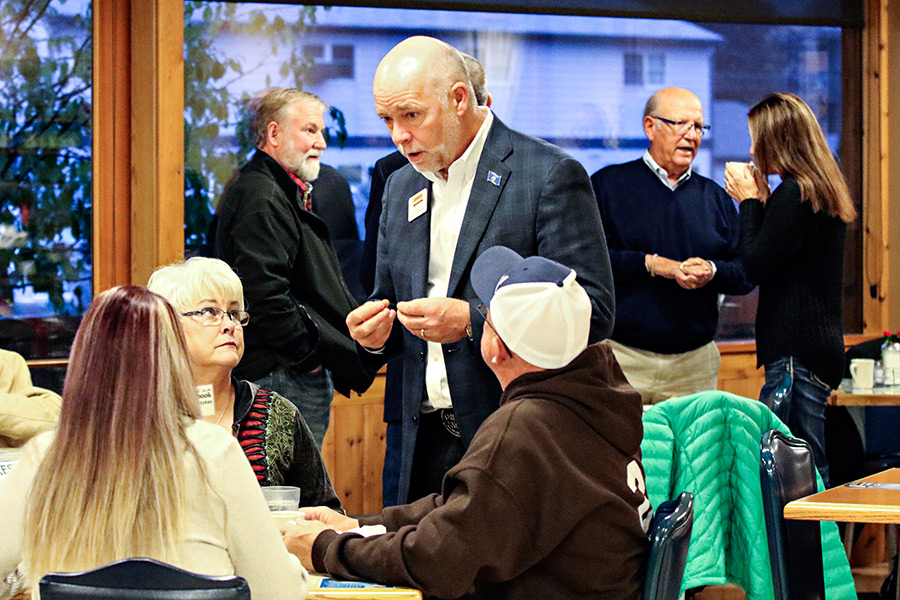Postelection Dominoes Create Five Open House Seats
Republicans are defending four GOP-leaning seats, while Democrats are protecting territory in a liberal California district
By Associated Press
ATLANTA – The postelection dominoes of President Donald Trump’s administration picks and a California Democratic appointment have created five openings in the House, and that means five special elections in the coming months.
It will take some Democratic upsets for this trial heat for 2018 to dent GOP control of the House, where Republicans have a 237-193 edge.
Republicans are defending four GOP-leaning seats. Democrats are protecting territory in a liberal California district. Republicans say that puts pressure on Democrats to prove they can capitalize on widespread opposition to Trump. Democrats counter that it’s merely a free opportunity to pick up a seat, maybe two, ahead of next year’s midterm elections.
A look at the five congressional contests:
___
GEORGIA’S 6th CONGRESSIONAL DISTRICT
This wealthy district spanning many of Atlanta’s northern suburbs has elected former Speaker Newt Gingrich, Sen. Johnny Isakson and current Health and Human Services Secretary Tom Price, all Republicans. But Democrats believe they have a shot, based on Trump’s underperformance and the early fundraising success of a 30-year-old former congressional staffer, Jon Ossoff.
Price won 68 percent of the vote in November, while Trump only edged Democrat Hillary Clinton, 48-47 percent.
Ossoff is trying to thread the needle, condemning Trump and highlighting the oversight role of Congress, yet styling himself as a business-friendly centrist. “I believe voters are tired of the partisanship and ready for something fresh,” he says, convinced he can win GOP-leaning moderates.
Television airwaves in this expensive market already are filled with Ossoff ads criticizing Trump and also a Republican super PAC ad criticizing the upstart Democrat, a clear sign Republicans aren’t taking any chances.
Ossoff’s path depends on advancing to a June 20 runoff from an April 18 “jungle primary” that will have more than a dozen candidates from both parties on the same ballot. In the likely event that no one captures a majority in April, the top two vote-getters, regardless of party, move on. Republicans says Ossoff, even if he advances, won’t stand up against one of several Republican candidates who are well-regarded in the district.
___
MONTANA’S AT-LARGE CONGRESSIONAL DISTRICT
Republican multimillionaire Greg Gianforte will try again to win over Montana voters after losing the 2016 governor’s race. This time, he’s talking up Trump.
“This election will be a referendum on Donald Trump and this administration,” Gianforte said after last week’s GOP nominating convention. Gianforte won 46 percent of the vote in November against Democratic Gov. Steve Bullock, double digits behind Trump’s 57 percent.
Gionforte will face musician and political newcomer Rob Quist, also chosen by a state party convention. Quist, a Democrat, already is the target of attack ads from the Congressional Leadership Fund, the same Republican super PAC that has been going after Ossoff in Georgia.
The winner of a May 25 special election will succeed Ryan Zinke, who now leads Trump’s Interior Department. Zinke won re-election with 56 percent of the vote before being tapped for the Cabinet post.
Montanans lean conservative, but they are willing to elect Democrats. Bullock, now in his second term, succeeded two-term Democratic Gov. Brian Schweitzer, and Jon Tester is in his second Senate term. Still, Montana’s single House seat has been in GOP hands since 1997.
Gionforte can self-finance his campaign, having made a fortune when Oracle paid $1.8 billion to acquire the technology firm he started. Quist has backing from Schweitzer, who remains popular in the state.
____
KANSAS’ 4th CONGRESSIONAL DISTRICT
This reliably Republican district anchored by Wichita has an April 11 special election to pick a successor to Mike Pompeo, now Trump’s CIA director. In a party nominating convention, Republicans tapped state Treasurer Ron Estes, who twice won huge margins statewide and held local office in Wichita for years before that.
Democrats, also in a convention, chose Wichita attorney Jim Thompson. Democrats took Thompson’s long odds over the former state treasurer whom Estes defeated in 2010. Republicans have held the seat since their 1994 sweep.
___
SOUTH CAROLINA’s 5th CONGRESSIONAL DISTRICT
The seat opened up when Trump tapped tea party lawmaker Mick Mulvaney to head the Office of Management and Budget.
Candidates for May 2 party primaries face a Monday deadline to file their candidacy. The race’s six Republicans include state legislative leader Tommy Pope, former state Rep. Ralph Norman and former state Republican Party Chairman Chad Connelly, who spent the last several years coordinating the national GOP’s outreach to evangelicals. The race’s three Democrats are Archie Parnell, a Goldman Sachs senior adviser; Alexis Frank, an Army veteran who is now a student; and Les Murphy, a Marine veteran.
The rapidly growing district includes the suburbs on the southern edge of Charlotte, North Carolina, and the college town Rock Hill, a profile that had South Carolina Democrats quietly hopeful they could threaten Mulvaney in November. But he won easy re-election.
___
CALIFORNIA’s 34th CONGRESSIONAL DISTRICT
This Los Angeles County district is the most lopsided of the special-election contests. Clinton swamped Trump here. The opening came when Gov. Jerry Brown elevated Rep. Xavier Beccera to state attorney general, replacing Kamala Harris, who ascended to the U.S. Senate. The district’s liberal leanings likely mean two Democrats — out of 19 who qualified — will advance from an April 4 jungle primary to a June 6 general election.